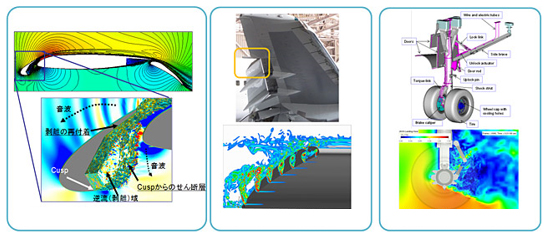Newsletter 2015.2 Index
Theme : "The Conference of Fluid Engineering Division"
|
Aeronautical Industry Overview and Brief Introduction of Fluid-related R&D Activities at JAXA Aeronautics
Kazuhiro NAKAHASHI
|
Abstract
Japanese manufacturing companies of aeronautics are increasing their presence in the world by participating in the international co-developments and the joint manufacturing of passenger planes and aero-engines. Moreover, the first flight of Mitsubishi Regional Jet, MRJ, is expected soon. Aeronautical industry in Japan is expanding the activities with sure-footedness.
ツツWith this circumstance, one of the main roles of the Institute of Aeronautical Technology in JAXA, JAXA Aeronautics, is to advance the aviation technology in order for supporting the progress of the aeronautical industry and for enhancing the air transportation safety. We are currently focusing on developments of “environment-friendly” and “safe” technologies necessary for future aviation. In this news-letter, some problems of fluid dynamics related to those R&D activities are briefly introduced.
Most important subjects of developing passenger planes are how to reduce the aerodynamic drag and the aircraft noise. More than half of the aerodynamic drag of an airplane is due to the surface skin friction on the wings and the fuselage. To reduce the drag, classical approaches such as the boundary layer laminarization and the use of riblets are revisited combined with the highly-advanced CFD and other emerging technologies. The noise reduction from airframe components of landing gear, high-lift devices and engines is also tackled by CFD analysis as shown in Fig.1 and optimization technique as well as the advanced measurement techniques. A key driver to tackle these problems is to combine the classical theories and knowledge of fluid dynamics with new technologies developed in other fields. We hope that more researchers from various areas can join the aeronautical R&D.
Key words
Aeronautical Industry, Passenger plane, Fluid dynamics for aircraft
Figures

Fig.1 Airframe aerodynamic noise reduction technology http://www.aero.jaxa.jp/research/ecat/fquroh/


